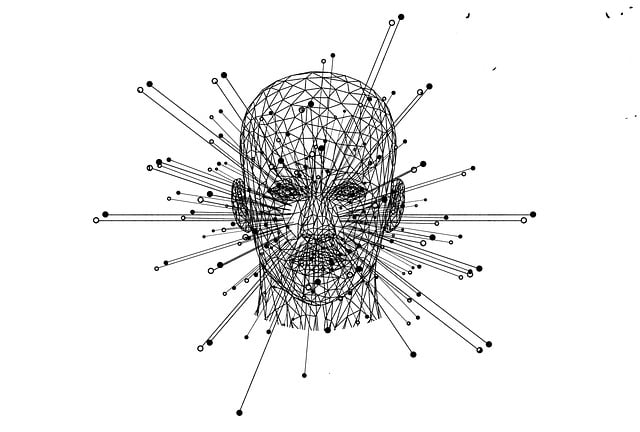Blockchain is a revolutionary technology that underpins secure, decentralized ledgers, transforming various sectors by enabling transparent, efficient, and fraud-resistant transactions. Its core features—immutability, cryptographic security, and consensus mechanisms like PoW and PoS—make it an indispensable tool for innovation and security in digital interactions. Smart contracts automate processes, reducing human error. Blockchain has already made significant impacts, such as enhancing product authenticity and trackability in supply chain management with IBM's blockchain platform, streamlining financial transactions by enabling faster, more secure international payments via Ripple, and providing reliable digital identity verification. As it overcomes scalability issues and navigates regulatory considerations, blockchain is set to expand its applications, including smart contracts and asset tokenization, leading to broader adoption of decentralized applications (dApps) and reinforcing its role as a cornerstone technology in the digital world. Its potential for transparency, security, and efficiency continues to drive its evolution across industries.
Blockchain technology stands at the forefront of technological innovation, offering a secure, transparent, and decentralized approach to data management. This article delves into the foundational aspects of blockchain, elucidating its core principles that underpin its robustness and versatility. We will explore real-world applications where blockchain has already made significant strides, accompanied by case studies highlighting its impact on various industries. As we navigate through the current landscape, we’ll also cast a visionary gaze into the future of this transformative technology, examining the challenges it faces and the opportunities that lie ahead. Join us as we dissect the intricacies of blockchain and its potential to reshape our digital world.
- Understanding the Core Principles of Blockchain Technology
- Real-World Applications and Case Studies of Blockchain Innovation
- The Future of Blockchain: Challenges, Opportunities, and Predictions for Growth
Understanding the Core Principles of Blockchain Technology

Blockchain technology stands as a transformative innovation in the digital realm, offering a decentralized and immutable ledger system that revolutionizes data management and transaction processing. At its core, blockchain is a distributed database or system of recording information in a way that makes it difficult or impossible to change, hack, or cheat the system. This is achieved through a series of blocks, each containing a list of transactions or records that are linked and secured using cryptography. Once a block is added to the chain, it becomes immutable, ensuring the integrity and verifiability of the data contained within.
The principles underlying blockchain technology are rooted in consensus mechanisms, which allow participants in the network to agree on the state of the ledger without the need for a central authority. These mechanisms, such as Proof of Work (PoW) or Proof of Stake (PoS), not only secure the network against fraud but also enable transactions to be processed transparently and efficiently across peer-to-peer networks. Additionally, the use of smart contracts on blockchain platforms introduces a level of automation, where predefined conditions are executed without human intervention, thus reducing the potential for errors and disputes. Blockchain’s ability to create tamper-proof records and enable secure, direct transactions is what makes it a game-changer in various sectors, including finance, supply chain management, healthcare, and beyond. Understanding these core principles is crucial for anyone looking to leverage blockchain technology for its potential to streamline processes, enhance security, and foster trust in digital interactions.
Real-World Applications and Case Studies of Blockchain Innovation

Blockchain technology has transcended its initial application as the underlying framework for cryptocurrencies like Bitcoin to become a transformative tool across various sectors. Its inherent characteristics, including decentralization, transparency, and immutability, have paved the way for innovative solutions in supply chain management, where it ensures product authenticity and trackability. For instance, IBM’s blockchain platform has been instrumental in enhancing transparency and traceability in the food industry by allowing consumers to scan a QR code on packaging to verify the journey of their food from farm to table. This not only improves food safety but also reduces waste by optimizing the supply chain process.
In finance, blockchain is revolutionizing the way transactions are processed. Banks and financial institutions are leveraging blockchain to offer faster, more secure cross-border payments. Ripple, a blockchain-based technology company, has partnered with various financial institutions to streamline international money transfers by reducing transaction times from days to mere seconds while lowering costs. Additionally, in the realm of identity management, blockchain is being used to create tamper-proof digital identities, ensuring secure and efficient authentication processes for individuals across the globe. This technology not only enhances security but also democratizes access, allowing for a more equitable system where users have greater control over their personal data. These real-world applications demonstrate the versatility of blockchain innovation and its potential to disrupt and improve systems across different industries.
The Future of Blockchain: Challenges, Opportunities, and Predictions for Growth

Blockchain technology has emerged as a transformative force with far-reaching implications across various sectors, from finance to supply chain management. As we look to the future, the challenges and opportunities presented by blockchain are vast and complex. One of the primary challenges is scalability; as the number of transactions increases, existing networks must evolve to handle higher volumes without compromising on security or speed. Additionally, regulatory frameworks worldwide are still adapting to the implications of decentralized systems, which necessitates a collaborative effort between governments and blockchain developers to establish clear guidelines that foster innovation while protecting users.
The opportunities for blockchain are equally significant. The technology’s potential to enhance transparency, security, and efficiency is attracting widespread attention. In the realm of finance, blockchain can revolutionize payment systems by enabling faster and more secure transactions. For supply chains, it offers a means to record and track transactions in real-time, reducing fraud and improving accountability. As blockchain continues to mature, we anticipate its applications will expand into areas like digital identity verification, smart contracts, and the tokenization of assets. Predictions for growth suggest that as infrastructure improves and interoperability between different blockchain systems advances, we will witness a proliferation of decentralized applications (dApps) and increased adoption across industries. Blockchain’s future is not without hurdles, but the technology’s core principles of decentralization and immutability position it as a pivotal tool for the digital age.
blockchain technology has emerged as a transformative force across various industries, offering unprecedented levels of security, transparency, and efficiency. This article demystified the core principles of blockchain, illuminated its practical applications through case studies, and projected its trajectory amidst challenges and opportunities. As we continue to witness the integration of blockchain into more sectors, it is clear that its impact will be profound and long-lasting. The future of blockchain is promising, with innovations poised to reshape how we interact with data, perform transactions, and ensure trust in a digital world. Stakeholders across all domains are encouraged to engage with this technology to unlock its full potential and drive societal advancements.
